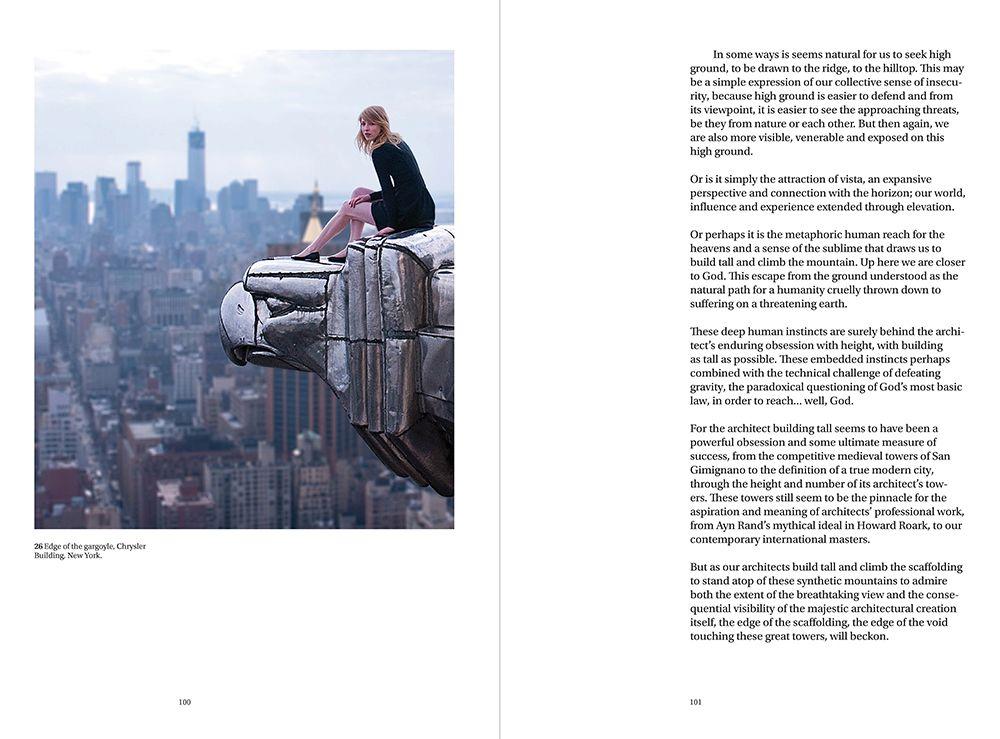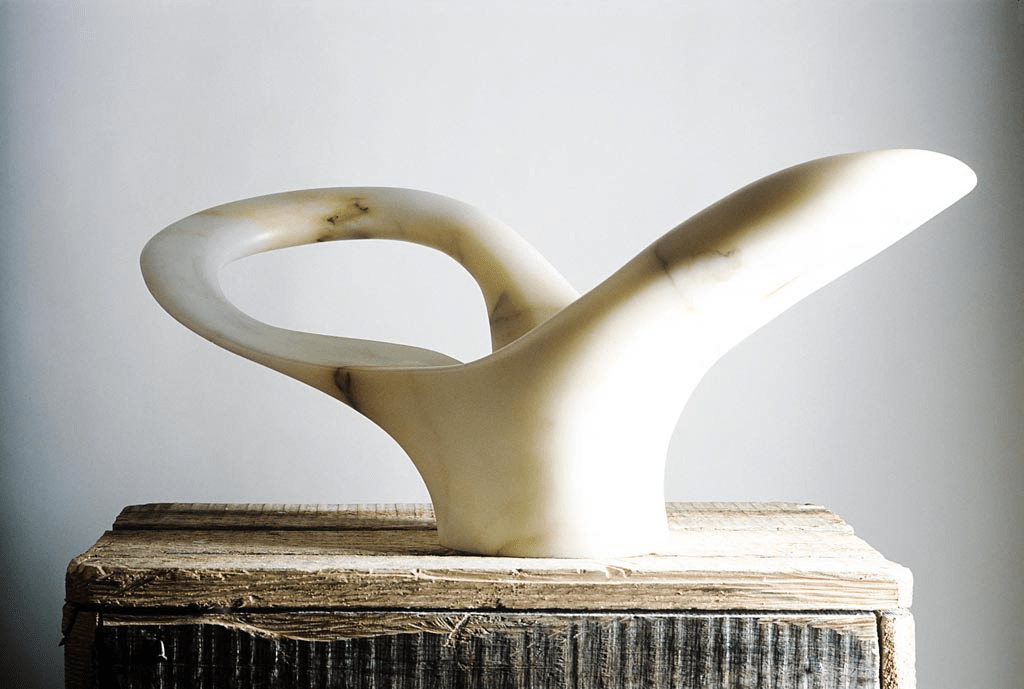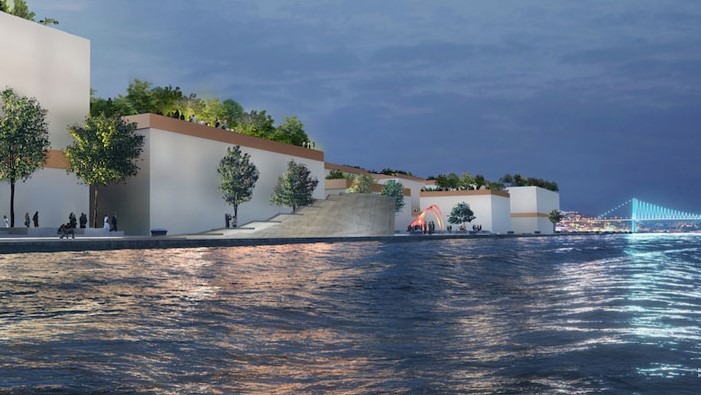Richard Francis-Jones is a leading Australian architect who, during the pandemic, penned a book titled “Truth + Lies in Architecture”, just out from ORO Editions. The publisher calls it “a collection of provocative essays that journey into the vexed circumstance of contemporary architectural practice.” It’s also an intense read that’s peppered with chapter lead-ins from sources as varied as Umberto Eco, Louis Kahn, Jim Morrison and Quentin Tarantino. That alone makes it worth the price of admission. A+A recently interviewed the author via email:
Your background?
I have practiced and taught architecture for many years, but it always feels like just a beginning. I was trained in Sydney and New York and I love both those cities. I love architectural practice, yet it must surely be one of the most challenging (and rewarding) of human activities. I have found there is so little time for reflection in an architecture practice, but this book is one of sincere reflection and speculation of our collective fate, squeezed in-between practice by the compulsion of lock down. I live, work and teach in Sydney.
The intent of this book?
Contemporary architecture has been progressively desiccated, undermined and commodified through the instrumental processes of the development industry and professional practice, together with the reductionism of media technology and market consumption demand. This book is an attempt to uncover the path that led to this diminishment. Perhaps it is also an act of camaraderie for those who care deeply about architecture and a tentative suggestion of a truer pathway.
The major challenges facing architects today?
The challenges facing the architect today are of such a scale that it is unsurprising we might seek solace in the proliferation of beguiling images. These challenges include environmental sustainability, in the form of climate change; social, in the form of class, gender and racial inequality; and the cultural, in terms of identity, exclusion and prejudice. Added to these almost overwhelming challenges we now face with the existential crises in the Ukraine and the potential conflagration of yet another European war. What is architecture’s role, complicit or curative, in rising to these extraordinary challenges?
You quote Umberto Eco’s Foucault’s Pendulum. Why?
At the beginning of each chapter, with each essay in this book, I have chosen a related quotation from a writer, thinker or filmmaker, as it is often these simple and distilled words that offer the most poetic insight. At the beginning of the book I have quoted from Umberto Eco’s novel “Foucault’s Pendulum” which goes to the overall question of the possibility of truth, perhaps truth in architecture, but also just truth. Eco’s words suggest the contingent nature of truth and its dependance on human need, interpretation and indeed presence.
And Kahn’s immeasurability, measurability, and unmeasurability?
As our design technology has developed, architecture and design have become increasingly data-driven. There is a very positive side to this as we have access to more and more information of the environmental, social, and technical dimensions of our work, but at the same time there is a real danger that we overlook the poetic, human dimension of architecture, that it is buried under all this calculation and data. Architecture is not mere calculation, there are emotional, psychological, philosophical and spiritual dimensions to architecture that defy measurement. The quotation from Louis Kahn at the beginning of the essay “The Face of Architecture and the Mask of the Architect” suggests the measurable and immeasurable are integral aspects of the process of creating architecture, that we must begin with a concept that is beyond measurement, then proceed through the process of design and construction to a realized an architecture that is beyond measurement.
The state of sustainability and architecture today?
The sustainability of our natural environment is perhaps the most critical issue of our time: Climate change, global warming, mass extinction and environmental destruction. What has architecture’s role been and what does it continue to be, in the degradation of our environment? Is the answer in the rigorous quantification of environmental impacts, in the measurement of operational carbon, in the measurement of embodied carbon? Is it in the extension of our system of quantification and environmental design ratings to include more holistic social and cultural dimensions? Without doubt this is true, but the answer is also in understanding the profound alienation of our lives from a closeness to the natural world; the much deeper question of how we are to find a place in the world for us to be in a way that avoids a mutual degradation of our life and the life of the natural world. Architecture today is a project of reconciliation of life and nature.
The significance of the villa in architectural history?
In the essay ‘The Fencing of Architecture and the Villa of the Architect’ I suggest that the two most destructive architectural typologies we have developed are the fence and the villa. They have (dis)figured land settlement in a way that has partitioned and controlled the landscape for exploitation, driving human alienation, inequality and environmental degradation on a now breathtaking scale. The villa that evolved from the Renaissance prototype of an ideal dwelling away from the noise and dirt of the city, a communion with nature for the privileged, has evolved into the hegemonic suburban dwellings that alienated us from both nature and each other, and at great cost to the environment. The villa has also been the ideal place for the experiments of the architect, the autonomy and isolation it offers the perfect blank canvas. What has been the cost and to what extent is the architect to be held responsible?
How have you negotiated the territory between truth and lies in architecture?
One of the questions I have asked is whether architecture can lay any claim to truth. Can architecture have a moral effect or purpose? Or is architecture indifferent to the intention of its makers and the actions it accommodates? We are surrounded by so much noise, polarization, argument and intolerance, that questions of fact and accuracy, let alone truth are suppressed, obscured, buried, or most worrying, even irrelevant. So it is difficult to have conversations of substance in architecture, to ask about its truth and its lies. The negotiation of this territory in search of architectural ‘truth’ will mean understating what lies architecture must also construct. It is a great challenge every day, for every architect and it will always be a territory inadequately charted. This book is a tentative attempt to make a fragment of that chart.
For more, go here.
[slideshow id=2422]



